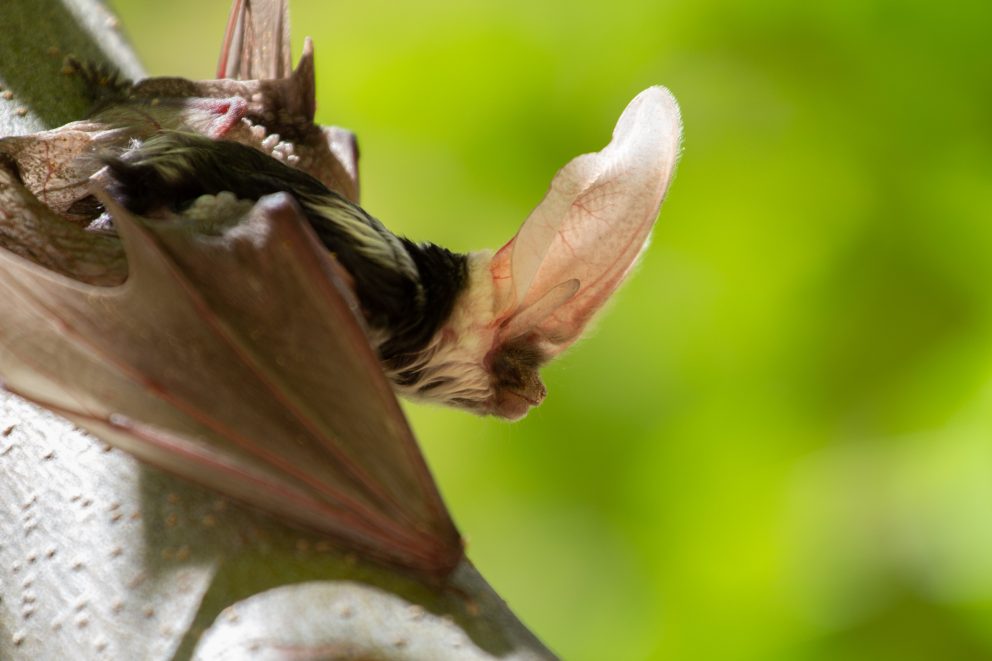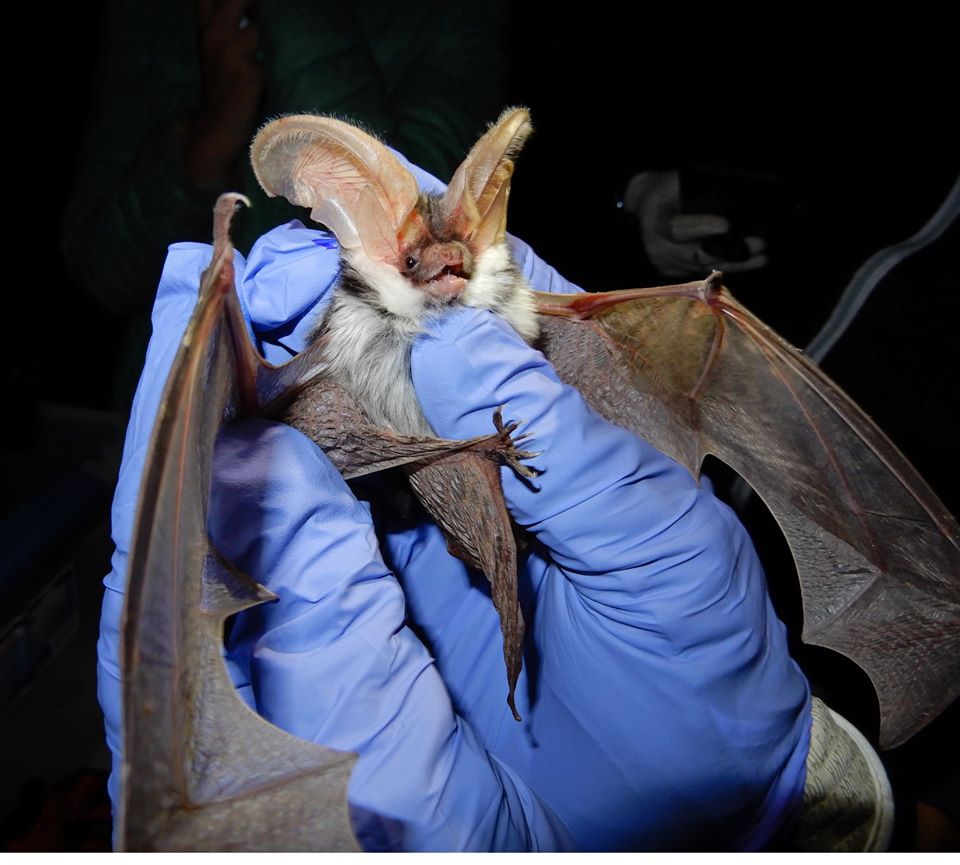- SCIENTIFIC NAME
- Euderma maculatum
- CLASSIFICATION
- Mammal
- LIFE SPAN
- 1-20 Years
- SIZE
- 4.3-4.5” | 0.035-0.044lbs
- STATE CONSERVATION STATUS
-
- Priority Species
- State Protected
- Threatened
- FEDERAL CONSERVATION STATUS
- Least Concern
- GAME STATUS
- Non-Game
- GAME TYPE
- None
- Washoe
- Humboldt
- Pershing
- Churchill
- Mineral
- Lyon
- Douglas
- Carson City
- Storey
- Elko
- Lander
- Eureka
- White Pine
- Esmeralda
- Nye
- Lincoln
- Clark
Habitat & Range
The Spotted Bat prefers to live near water sources such as springs, creeks and rivers. Spotted Bats roost in vertical cliffs and ledges until they can come out in the night and hunt. These bats are distributed throughout the state, but in very patchy occurrences.
- Cliffs and Canyons
- Lakes and reservoirs
- Upland Forests
Threats
- Habitat Loss
- Urban Development
Natural History
Although not much is known about the life span of the Spotted Bat, many other bat species tend to live in the wild for over 20 years. It’s assumed that the Spotted Bat lives about this long as well. The Spotted Bat is an insect specialist, that means they only eat insects. They eat a variety of different insects, but prefer moths. They will tear off the wings and eat only the abdomen! Spotted Bats, like other bats, will give live birth to one young, called a “pup,” per year. Pups are not born with the distinctive spots of the adults, but this unique coloration will appear by the time they are ready to mate.
Fun Facts














